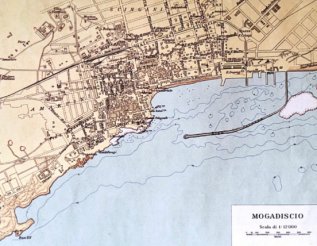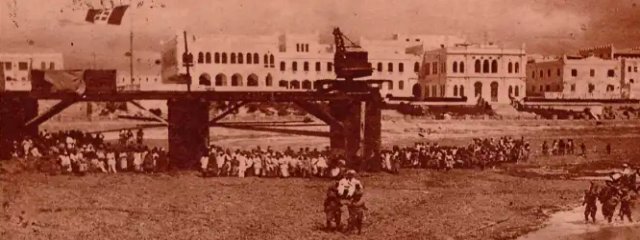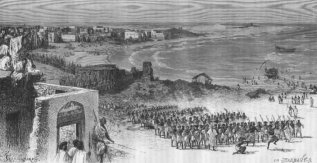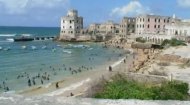|
Perhaps the most visible and enduring impact of the Italian colonial administration on Mogadishu was its ambitious urban development program. The city, previously characterised by narrow alleyways, coral-stone houses, and traditional markets, underwent a significant architectural transformation. The Italians embarked on a grand plan to modernise Mogadishu, creating wide avenues, public squares, and imposing buildings that reflected European architectural styles, particularly Italian Rationalism and Fascist architecture during Mussolini's era.
The Italian colonial administration also sought to integrate Mogadishu and its hinterland into the global colonial economy. Investments were made in agriculture, particularly in banana and cotton plantations along the Shabelle River, with infrastructure like roads and railways built to connect these production areas to the port of Mogadishu. |
Colonial Mogadishu |
Colonial Mogadishu |
Colonial Mogadishu | Colonial Mogadishu |
 |

|
The city became the central hub for trade, administration, and military operations. Socially, the colonial period resulted in a stratified society. While some Somalis found opportunities in the new administrative and economic structures, the majority experienced varying degrees of exploitation and marginalisation. Italian families settled in the city, creating a distinct European community with its own social amenities and services, often separate from the local population. Despite the imposition of colonial rule and the development projects, the period was not without significant resistance from various Somali factions, most notably the Dervish Movement led by Sayyid Mohammed Abdullah Hassan. While these movements were largely suppressed by the colonial administration through military force, they laid the groundwork for future nationalist sentiments. The Italian regime itself changed, particularly during the Fascist era, which saw increased efforts at "Italianization" and more stringent racial policies. However, World War II led to the British occupation of Italian Somaliland, and after a period under UN Trusteeship (administered by Italy), Somalia finally achieved independence in 1960. Upon independence, the newly formed Somali Republic inherited the administrative structures and the physical infrastructure left by the Italian colonial administration. Many of the grand buildings constructed during the colonial era continued to serve as government ministries, banks, and public institutions. The urban plan, with its wide boulevards and distinctive architecture, remained largely intact, fundamentally shaping the city's identity. Today, the colonial buildings of Mogadishu stand as poignant reminders of a complex past. While many have suffered damage due to decades of conflict and neglect, their skeletal remains or restored grandeur tell a story of foreign imposition, modernisation, and the enduring resilience of the city. They represent both the aspirations of a bygone empire and the foundations upon which modern Mogadishu was built. This video montage shows pictures and images of colonial Mogadishu (meaning 'Seat of the Shah') from the 1800s onwards set to traditional Somalia music. |

 Key colonial buildings constructed during this period include:
Key colonial buildings constructed during this period include:






